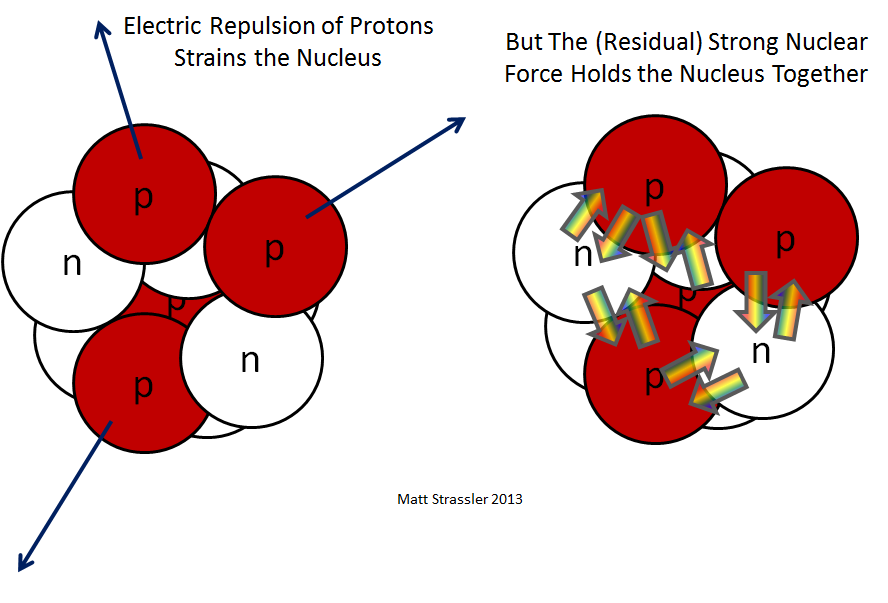The discovery of the strong nuclear force is a tale intricately interwoven with the evolution of theoretical physics and quantum mechanics. This fundamental force, responsible for holding the nuclei of atoms together, was not the result of a singular revelation but rather a cumulative process involving the contributions of many scientists over several decades. Understanding how the strong nuclear force was discovered requires an exploration of historical contexts, experimental advancements, and the pivotal theories that shaped modern nuclear physics.
Initially, as the 19th century transitioned into the 20th, scientists were primarily focused on the discovery and understanding of the atom. The acceptance of John Dalton’s atomic theory laid the groundwork for subsequent investigations into atomic structure. However, it was not until Ernest Rutherford’s landmark experiment in 1911 that the nuclear model of the atom emerged. Rutherford utilized alpha particles to probe the structure of gold foil, leading to the discovery of a compact nucleus at the center of the atom. While this finding was monumental, it also posed a significant question: what force could possibly hold the protons, which repel each other due to their positive charge, together within this minuscule nucleus?
The answer to this question was not apparent at first. In fact, in the aftermath of Rutherford’s work, physicists struggled with the instability of the atomic nucleus. The existence of a force that could counteract the electromagnetic repulsion among protons became an area ripe for further exploration. As the 1930s approached, the growing understanding of subatomic particles catalyzed developments in both nuclear physics and quantum mechanics, heralding a new era of discovery.
In 1932, James Chadwick’s discovery of the neutron was a pivotal moment. The neutron, an electrically neutral particle residing within the atomic nucleus, brought clarity to the discussion. It became evident that neutrons contributed to the overall mass of the nucleus and, crucially, could facilitate stronger interactions without contributing to electromagnetic repulsion. This led to the notion that the strong nuclear force was indeed a force mediated predominantly by neutrons and protons collectively.
Following these discoveries, the groundwork for quantifying the strong nuclear force was laid. In 1935, physicist Hideki Yukawa proposed a groundbreaking theoretical framework to explain this enigmatic force. Yukawa hypothesized the existence of a particle, which he called the meson, as a carrier of the nuclear force. This notion ventured into the realm of quantum field theory, postulating that mesons mediate processes involving nuclear interactions, thereby providing an attractive force between nucleons (neutrons and protons). This concept not only represented a significant advance in theoretical physics but also initiated an era of particle physics as researchers began to explore the implications of Yukawa’s work.
The experimental validation of Yukawa’s theoretical predictions proved to be a challenge. However, the post-World War II era ushered in advancements in particle accelerators that allowed physicists to probe deeper into the subatomic world. The first meson, the pion, was finally discovered in 1947 by Cecil Powell and his team in cosmic ray experiments. The identification of pions as Yukawa’s predicted particles provided compelling evidence for the existence of the strong nuclear force. This discovery marked a radical breakthrough, showcasing how particle physics and nuclear forces were intertwined.
As the strong nuclear force became more characterized, the field further advanced with the advent of quantum chromodynamics (QCD) in the 1970s. QCD formalized the understanding of strong interactions through the concept of color charge. This theory described how quarks – the fundamental constituents of protons and neutrons – are held together by the exchange of gluons, the force carriers in the strong interaction. Such advances not only solidified the understanding of the strong nuclear force at a subatomic level but also consolidated the Standard Model of particle physics, a comprehensive framework for understanding elementary particles and their interactions.
Today, the understanding of the strong nuclear force continues to evolve. Experimental facilities such as the Large Hadron Collider (LHC) delve into high-energy collisions that continue to test theoretical predictions and explore new realms of physics. The implications of the strong nuclear force extend beyond mere atomic stability; they also play critical roles in astrophysics, particularly in the processes governing stellar nucleosynthesis and supernovae dynamics.
In conclusion, the discovery of the strong nuclear force is a compelling narrative woven with contributions from multiple scientific pioneers across decades. From Rutherford’s initial revelations about the atomic nucleus to Yukawa’s theoretical innovations and the advancements provided by particle physics, the journey has been marked by a relentless pursuit of knowledge. Understanding this primordial force not only illuminates the complexities of atomic structure but also serves as a testament to human ingenuity in unraveling the mysteries of the universe. Thus, the strong nuclear force represents more than just an interaction; it embodies the spirit of scientific inquiry itself.












